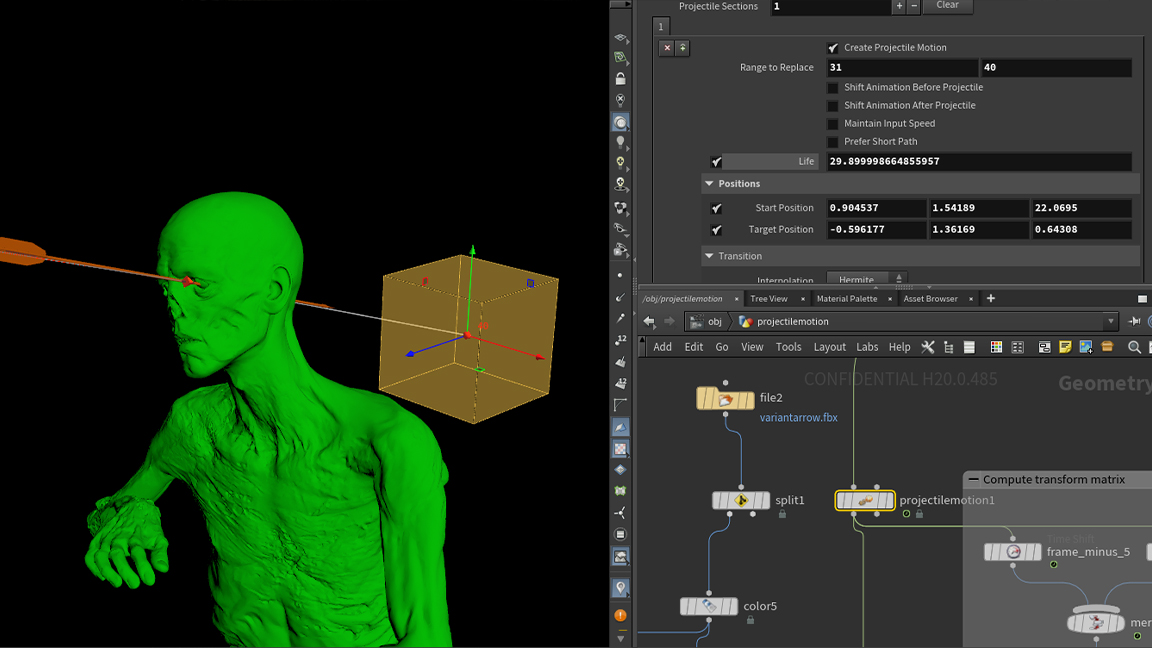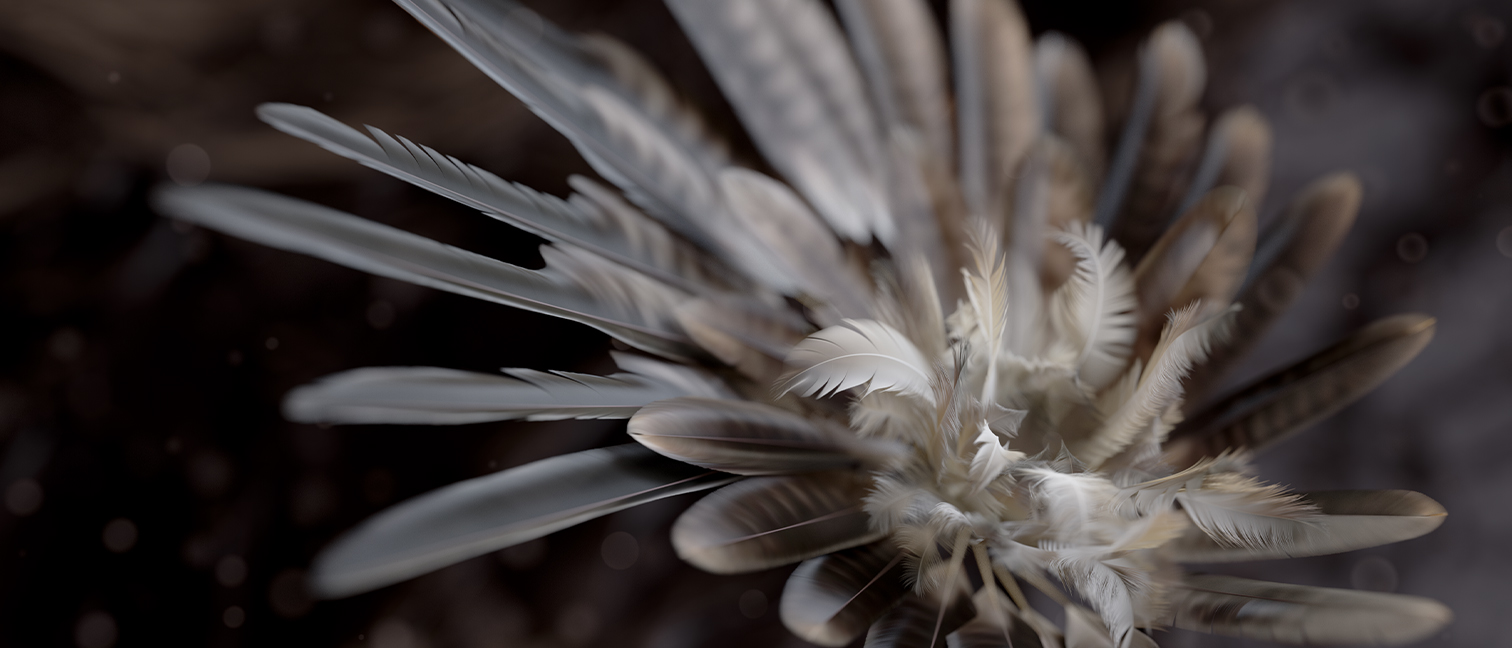Our Verdict
Houdini 20 continues the package’s evolving feature set and offers amazing capabilities for artists. Improvements to the Karma renderer, extended functionality to simulation tools, and even better animation capabilities make Houdini 20 a force to be reckoned with.
For
- Incredibly powerful feature set
- Tools span whole animation and VFX workflow
Against
- Steep learning curve
- Expensive investment
Why you can trust Creative Bloq
Price Free (Apprentice), £215/$270 (Indie), £1,590/$1,995 (Core), £3,580/$4,495 (Houdini FX)
OS Windows 8.1 and higher, macOS 11, Linux
Memory 12GB or higher recommended (8GB usable)
Processor Intel or AMD x64 CPU with SSE 4.2 required
GPU Nvidia RTX & GeForce GPUs: 535 Studio Driver or higher, AMD: 22.Q3 or higher, Intel 30.0.100.9955 or higher
Company SideFX
Houdini 20 is the latest version of the popular CG package that has found a home amongst the VFX elite, and has seen it deliver an incredible level of work, primarily for film and TV. If you’ve seen Frozen, Rio or Fantasia 2000, you’ll know the high-quality effects that globally recognised studios have been able to achieve.
Despite its place among the industry’s household names, its developer SideFX has taken further strides toward making the software not just more capable but easier to use. With Houdini 20 we’re given updates to the Karma renderer and a range of other toolsets including animation, simulation and character rigging.
If you need to get up to speed read my feature 'Houdini: everything you need to know' and take a look at our collection of Houdini tutorials to see what past iterations of the software could do. If you do intend to download Houdini 20 you may need to upgrade your GPU, read our guide to the best graphics cards for advice.
Houdini 20 review: Karma XPU upgrades

Karma is Houdini’s renderer and has been the default since version 19.5. It has a CPU iteration, as well Karma XPU, a hybrid CPU/GPU version. Many of the updates are centred around Karma with the CPU version seeing the introduction of a Physical Sky model, which makes setting up realistic skies based on the time of day an absolute breeze. The colour replication for different times of the day is excellent, and when partnered with the new cloud material it’s possible to create truly gorgeous skies.
MaterialX is ILM’s open standard for material and lookdev data, and is heavily utilised by Houdini. In Houdini 20 we see improvements to various parts of the workflow and elements of the material, including a new thin-walled transmission for MtlX Standard Surface.
This delivers great results on objects that need complex refractions. Improvements to the Material Linker and Material Catalog also further streamline the creative workflow when it comes to materials.
Karma XPU benefits from the implementation of a fog box, plus nested dielectrics, absorption, dispersion and cryptomatte. These may seem like fairly standard features, but Karma is relatively new and the XPU version was only released in mid-2022, so there’s a lot of catching up to be done.
GPU-based renderers also often have a more limited set of features available than their CPU counterpart, which plays into it too. Nevertheless, the main headline is that Karma continues to go from strength to strength and can be trusted to deliver great results in the majority of scenarios.
General rendering tools have also been improved with render statistics and multi-frame/multi-shot rendering. The stats provide a detailed breakdown of the rendering process. This is incredibly useful when trying to reduce render times and diagnose slowdowns. The interface is carefully designed, interactive and easy to navigate.
The multi-frame and multi-shot rendering tools make it possible to see changes across multiple camera angles, as well as develop multiple shots within a scene. Rendering is all carried out interactively in the background, meaning any amendments are immediately replicated in the renders. This is another useful feature that enhances an artist’s workflow
Houdini 20 review: improved simulations

A significant part of Houdini’s appeal is simulations, so it’s no surprise to see a number of wide-ranging improvements to this area of the software. These include a Whitewater Solver integrated into an SOP workflow, a bubble generator that better calculates the interaction between bubbles and, probably my favourite, the Ripple Solver. This enables VFX artists to create classic water ripples on geometry, but can also be extended to create other ripple effects like shockwaves on characters.
The simulation capabilities in Houdini are outstanding and to see SideFX continuing to extend the possibilities and introduce new functionality is simply staggering. It has now also introduced a Vellum Wind Shadow and Feather system.
Among this new range of features, my favourite has to be the Sticky Collisions capability
As you’d expect, there are also substantial improvements made to the broad category of rigging and animation, very much building upon the excellent work done in this area in Houdini 18.5. You’ll now find improved support for projectile motion needs, video reference in the Viewport, and a new animation environment with selection sets.
Among this new range of features, my favourite has to be the Sticky Collisions capability. A common job animators are tasked with is to connect a flying object to another object, such as a character, when they collide. Upon their collision, the two objects will then act as one, with their movements affecting each other.
This has now been made much simpler through Houdini 20’s Sticky Collisions system. This functionality is built into the Crowd Solver, which means those agents can be told to respond in a certain way once they’ve been hit by any object. All of this helps to more quickly and efficiently set up character animation in your work, and crowds in particular.
This content originally appeared in 3D World magazine. Subscribe to 3D World at Magazines Direct.

Thank you for reading 5 articles this month* Join now for unlimited access
Enjoy your first month for just £1 / $1 / €1
*Read 5 free articles per month without a subscription

Join now for unlimited access
Try first month for just £1 / $1 / €1
out of 10
Houdini 20 continues the package’s evolving feature set and offers amazing capabilities for artists. Improvements to the Karma renderer, extended functionality to simulation tools, and even better animation capabilities make Houdini 20 a force to be reckoned with.

Paul is a digital expert. In the 20 years since he graduated with a first-class honours degree in Computer Science, Paul has been actively involved in a variety of different tech and creative industries that make him the go-to guy for reviews, opinion pieces, and featured articles. With a particular love of all things visual, including photography, videography, and 3D visualisation Paul is never far from a camera or other piece of tech that gets his creative juices going. You'll also find his writing in other places, including Creative Bloq, Digital Camera World, and 3D World Magazine.

